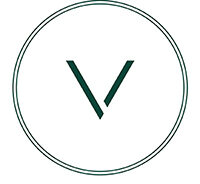Paris, patron of the world’s first restaurants…
Restaurants are truly Paris’ children; because it is in Paris that they were born. Until their arrival, there were cabarets, and taverns. In the taverns, wine was sold by the jar. At the cabaret, they sold it “by the plate”, that’s to say, more specifically, on a dressed table and accompanied by a good meal. La Fontaine, Molière, and Racine went, for example, to the “Mouton Blanc”, a legendary cabaret on the rue du Vieux-Colombier. As a general rule, proper “cuisine” was still restricted to the private salons of the rich, whereas the taverns and the cabarets served uninspiring fare.
Paris’ first restaurant to be called such, opened in 1765 on rue des Poulies (today, rue du Louvre). Named the Boulanger, it served a consommé that was “restaurant” – that’s to say restorative, invigorating – called the “Prince’s bouillon”.
It was a winning formula and the Boulanger quickly found itself with a number of imitators. But it was not so far away, moments from the Palais Royal, that the restaurant was about to gain its royal warrant.
In 1786, Antoine Beauvillier, who started his career in the kitchens of the Count of Provence (the future Louis XVIII) opened his Taverne Anglaise. Elegantly decorated and with a refined menu, it became established almost overnight.
The Palais Royal even became the epicentre of Paris’ first real gastronomic hub, which was to develop considerably with the onset of the Revolution. Located where one usually found prim boutiques languishing under galleries, were the ice-cream maker Corazza, the Café des mille colonnes, the Café de Foy, Huré, Février, and la Grotte Flamande. Most importantly, the famous Café de Chartres was here, the place the Royalists came to meet, where one treated oneself to vermicelli and rack of lamb with beans. The only survivor of this golden age, today it goes by the name of the Grand Véfour…
Sensing the dawn of a new era, country-folk from the provinces came to Paris to offer up their specialities. As a result, one could taste the Bouillabaisse and the Brandade at the Frères Provençaux, at the angle of rues Sainte-Anne and Louvois…
So there you have it, that’s how Paris became the capital of gastronomy…

